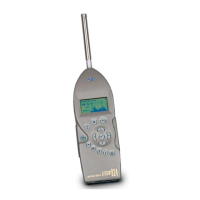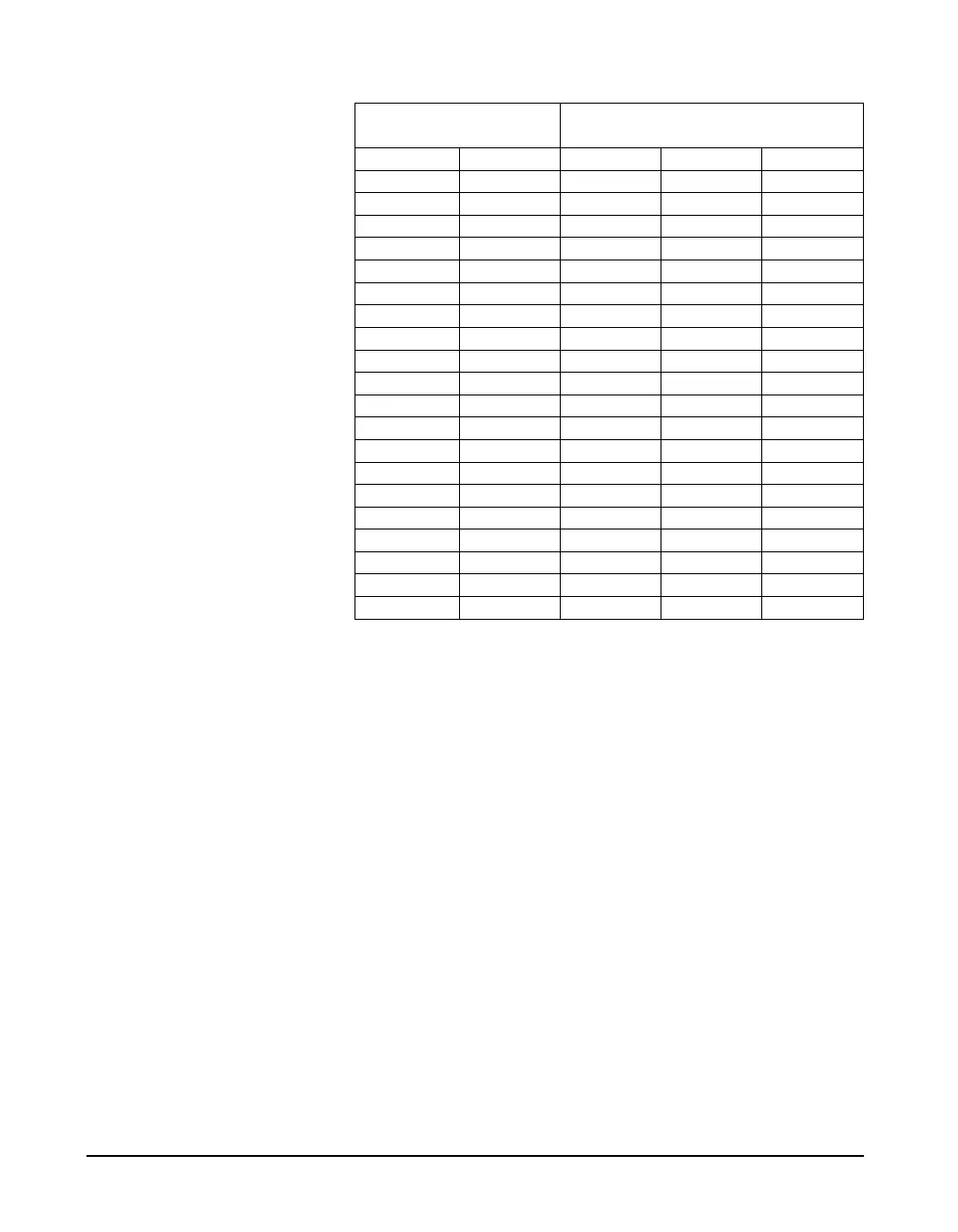D-12 824 Reference Manual 9/29/09
L
eq
See “Energy Equivalent Sound Level”, “Sound Level”,
Energy Average”, and “Time Weighted Average”
Level (dB) A descriptor of a measured physical quantity, typically used
in sound and vibration measurements. It is attached to the
name of the physical quantity to denote that it is a
logarithmic measure of the quantity and not the quantity
itself. The word
decibel is often added after the number to
express the same thing. When frequency weighting is used
the annotation is often expressed as dB(A) or dB(B).
Measurement Duration (T) The time period of measurement. It applies to hearing
damage risk and is generally expressed in hours.
Standard: ANSI S12.19
Microphone Guidelines
Microphone - Types: A device for detecting the presence of
sound. Most often it converts the changing pressure
associated with sound into an electrical voltage that
duplicates the changes. It can be composed of one of the
following types:
250 250 -8.6 -1.3 0
315 -6.6 -0.8 0
400 -4.8 -0.5 0
500 500 -3.2 -0.3 0
630 -1.9 -0.1 0
800 -0.8 0 0
1000 1000 0 0 0
1250 0.6 0 0
1600 1.0 0 -0.1
2000 2000 1.2 -0.1 -0.2
2500 1.3 -0.2 -0.3
3150 1.2 -0.4 -0.5
4000 4000 1.0 -0.7 -0.8
5000 0.5 -1.2 -1.3
6300 -0.1 -1.9 -2.0
8000 8000 -1.1 -2.9 -3.0
10000 -2.5 -4.3 -4.4
12500 -4.3 -6.1 -6.2
16000 16000 -6.6 -8.4 -8.5
20000 -9.3 -11.1 -11.2
Center Frequencies, Hz Weighting Network Frequency
Response
1/3 Octave 1 Octave A B C

